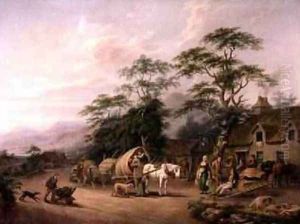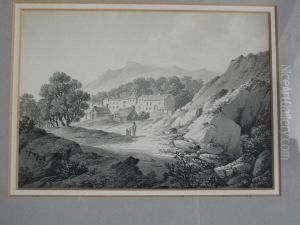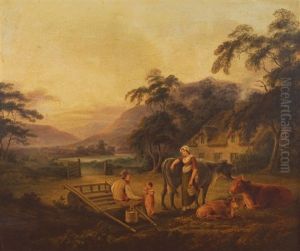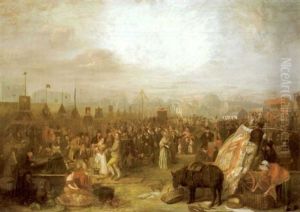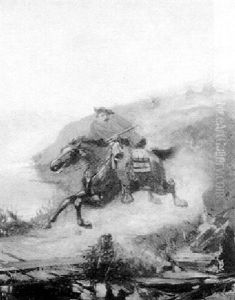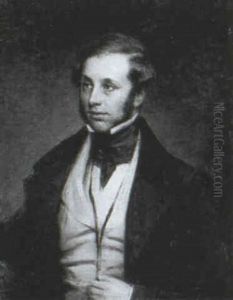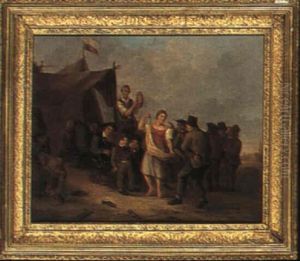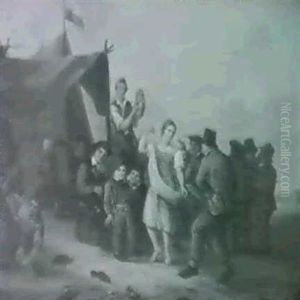John George Mulvany Paintings
John George Mulvany was an Irish-American artist, best known for his paintings which vividly captured scenes from American history, particularly the American West and the Civil War. Born in 1839 in County Meath, Ireland, Mulvany's family emigrated to the United States when he was a child, settling in Cincinnati, Ohio. This move would greatly influence his career and the subjects of his most celebrated works.
Mulvany received his initial art education in Cincinnati, a city with a burgeoning art scene at the time, and later honed his skills in Europe, studying at prestigious institutions such as the Royal Academy in Munich, Germany. His education and experiences in Europe played a significant role in shaping his artistic style, which combined European techniques with distinctly American themes.
Upon returning to the United States, Mulvany became deeply interested in the Civil War, which had profoundly impacted American society. He is perhaps best known for his masterpiece, 'Custer's Last Rally,' a dramatic and large-scale portrayal of the Battle of Little Bighorn, which captured the imaginations of many Americans and became an iconic representation of the event. This painting, along with others focusing on similar themes, demonstrated Mulvany's skill in depicting complex historical scenes with accuracy, emotion, and a deep sense of drama.
Throughout his career, Mulvany moved between the United States and Europe, engaging with various artistic communities and showcasing his work. Despite facing financial difficulties later in life, his contributions to American art were significant, influencing the ways in which historical events, particularly those involving conflict and the American frontier, were depicted in art. Mulvany's legacy includes not only his celebrated historical paintings but also portraits and landscapes that reflect his diverse talents and interests.
John George Mulvany passed away in 1906, leaving behind a body of work that continues to be appreciated for its historical value and artistic merit. His paintings are held in various collections and museums, serving as a testament to his skill in capturing pivotal moments in American history with vibrancy and a profound sense of humanity.
